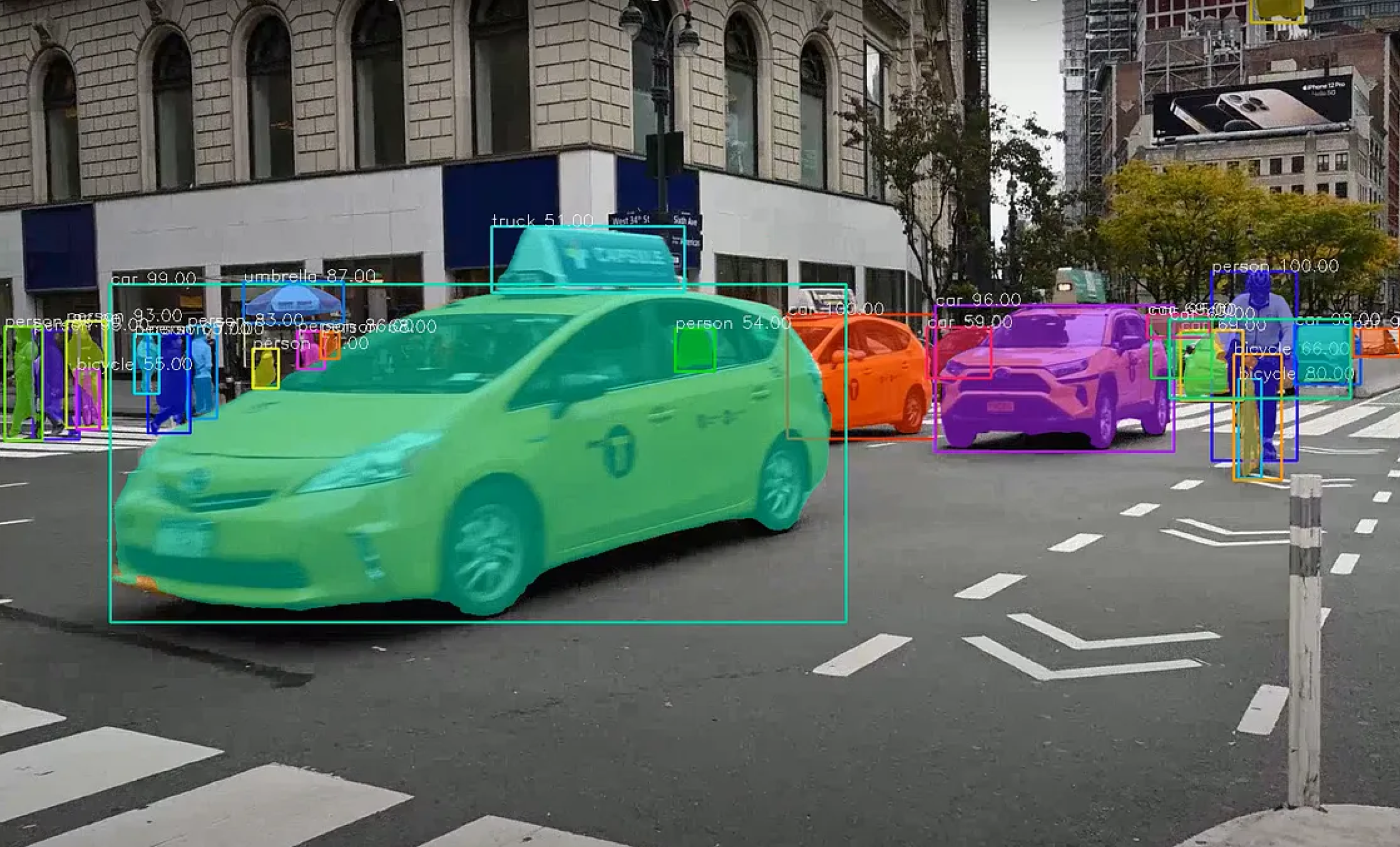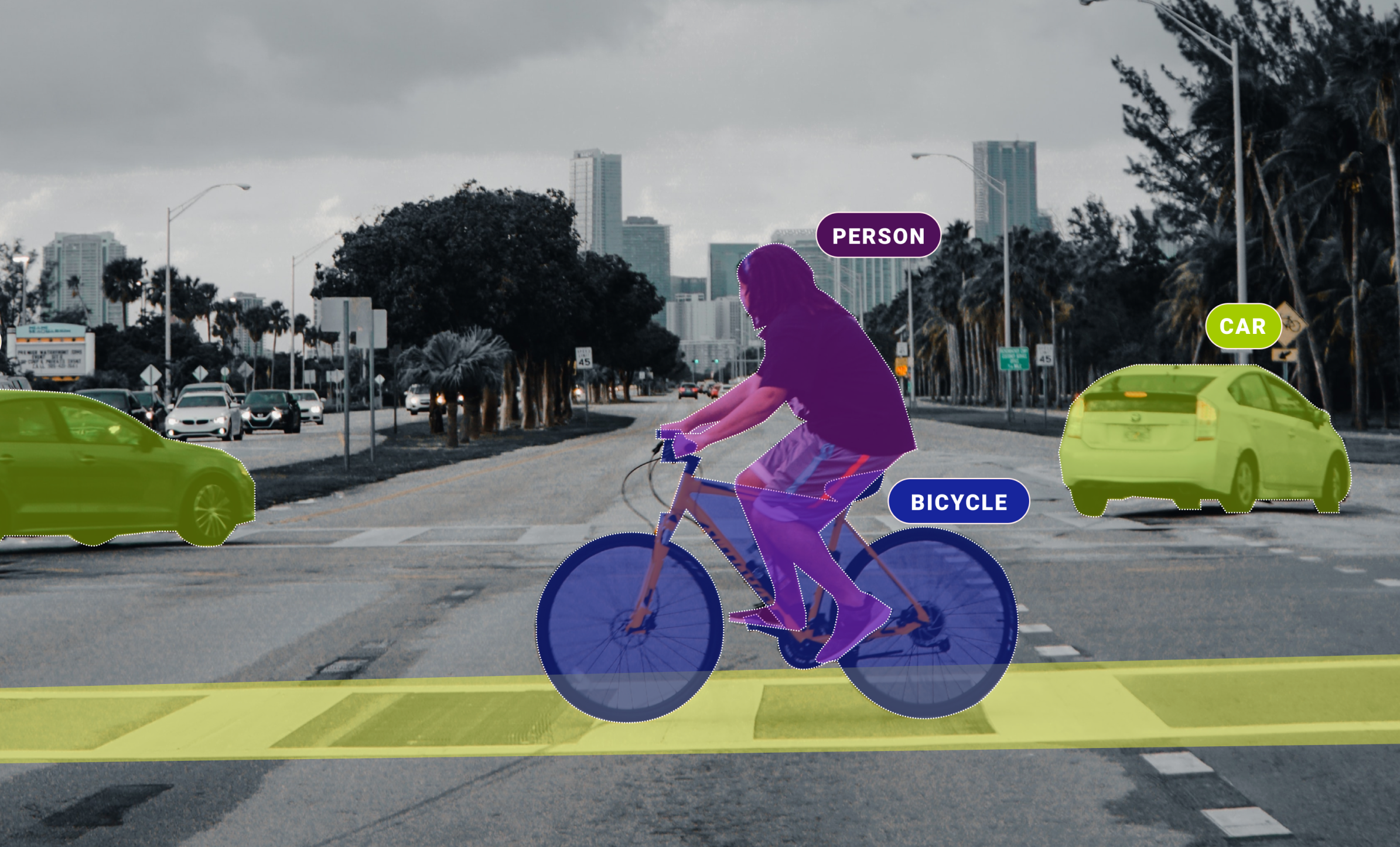Revolutionizing Traffic Management Through Image Segmentation and AI
In today’s rapidly evolving urban landscapes, traffic congestion has become a fairly common challenge, impacting economies, environments, and quality of life. Traditional methods of traffic management are often insufficient to address the complexities of modern traffic systems. However, with the advent of advanced technologies such as image segmentation and artificial intelligence, there is now a transformative opportunity to revolutionize how we manage traffic in cities worldwide. In this article, we will talk about how harnessing AI and data annotation, specifically image segmentation, can lead to breakthroughs in the way we currently manage traffic.
Understanding Image Segmentation and AI in Traffic Management

It is important to understand the role image segmentation and AI play in traffic management, since it will allow us to grasp the potential of these technologies in revolutionizing urban transportation systems. Image segmentation involves breaking down digital images into distinct segments or regions, enabling ML systems to analyze and interpret visual data more effectively. In the context of traffic management, image segmentation allows for the identification and classification of various elements such as vehicles, pedestrians, lanes, traffic signs, and obstacles in real time. This segmentation serves as the foundation for AI-powered algorithms to extract meaningful insights from traffic scenes, facilitating data-driven decision-making for optimizing traffic flow, enhancing safety, and reducing congestion.
Artificial intelligence, particularly deep learning techniques like convolutional neural networks (CNNs), complements image segmentation by enabling machines to learn and understand patterns within segmented images. Trained on extensive datasets, AI models can accurately recognize and interpret traffic scenarios, predict traffic patterns, and identify potential risks or inefficiencies. By leveraging AI, traffic management systems can dynamically adjust traffic signals, lane configurations, and routing strategies based on real-time data obtained through image segmentation, leading to more efficient, responsive, and sustainable transportation networks. Overall, understanding the symbiotic relationship between image segmentation and AI is essential for unlocking the transformative potential of these technologies in optimizing urban mobility and improving the overall quality of transportation systems.
Applications of Image Segmentation and AI in Traffic Management

There are many practical applications of AI and image segmentation in how traffic can be better managed. These include:
- Vehicle and Pedestrian Detection – Image segmentation and AI can be used to detect and track pedestrians and car movements in traffic scenes. By accurately identifying their presence and movement patterns, AI-powered systems can alert drivers to potential collision risks, enhancing safety for vulnerable road users.
- Traffic Flow Analysis – By segmenting images from traffic cameras and analyzing them using AI algorithms, traffic management systems can optimize traffic flow in real time. This includes dynamically adjusting signal timings, managing lane configurations, and controlling access to specific routes to alleviate congestion and improve overall traffic efficiency.
- Automated Traffic Surveillance – AI algorithms can analyze segmented images to detect traffic violations such as running red lights, illegal parking, or speeding. Automated systems can then issue citations or warnings to violators, improving compliance with traffic regulations and enhancing overall road safety.
- Incident Detection and Response – Image segmentation combined with AI enables rapid detection of accidents or road hazards. AI algorithms can analyze segmented images to identify anomalies such as stopped vehicles, debris on the road, or unusual traffic patterns, triggering immediate alerts to authorities for quick response and resolution.
Benefits of Implementing AI and Image Segmentation

Implementing AI and image segmentation can help us reap many benefits, such as:
- Improved Traffic Efficiency – AI-powered systems can analyze segmented images to optimize traffic flow, reduce congestion, and minimize travel times. By dynamically adjusting signal timings, lane configurations, and routing strategies based on real-time data, cities can achieve smoother and more efficient traffic operations.
- Enhanced Road Safety – Image segmentation combined with AI enables rapid detection of accidents, road hazards, and traffic violations. By identifying potential risks in traffic scenes, authorities can respond promptly, mitigating risks and improving overall road safety for all road users.
- Data-Driven Decision-Making – Image segmentation and AI enable the analysis of large volumes of traffic data collected from segmented images. By extracting valuable insights from this data, cities can make informed decisions regarding traffic management strategies, infrastructure investments, and urban planning initiatives.
- Scalability and Flexibility – By optimizing traffic flow, reducing congestion, and enhancing safety, the implementation of AI and image segmentation ultimately leads to a better overall user experience for motorists, pedestrians, cyclists, and public transport passengers alike. This can help the AI system become more scalable and used in a wide variety of other applications.
Challenges and Considerations
While AI and image segmentation offer promising solutions for revolutionizing traffic management, there are several challenges and considerations that must be addressed to ensure successful implementation:
- Privacy Concerns – The use of cameras for image capture and analysis raises privacy concerns regarding the collection and storage of sensitive personal data. Implementing robust privacy and security measures, such as data anonymization, encryption, and access controls, is essential to protect the privacy rights of individuals while leveraging AI and image segmentation for traffic management.
- Technical Limitations – Challenges still remain in terms of accurately detecting and classifying objects under varying environmental conditions such as adverse weather, poor lighting, or occlusions. Additionally, the reliance on extensive and diverse training datasets and the computational complexity of deep learning models may pose constraints on the scalability and real-time performance of AI-driven traffic management systems.
- Infrastructure Requirements – AI algorithms, especially deep learning models used for image segmentation, can be computationally intensive and require significant processing power and memory resources. Deploying these algorithms in real-time traffic management systems may necessitate powerful hardware infrastructure and efficient optimization techniques to ensure timely processing of data.
- Integration with Existing Systems – Integrating AI and image segmentation systems with existing traffic management infrastructure, including traffic signal controllers, surveillance cameras, and communication networks, can be complex and require careful coordination and compatibility considerations. Ensuring seamless interoperability and data exchange between different systems is crucial for the effective operation of integrated traffic management solutions.
The Future of Traffic Management
The future of traffic management holds immense promise with the integration of AI and image segmentation technologies. As advancements continue, we can expect increasingly sophisticated algorithms capable of accurately analyzing and interpreting complex traffic scenes in real time. These systems will enable cities to optimize traffic flow dynamically, minimize congestion, and enhance safety for all road users. Additionally, AI-driven predictive analytics will empower authorities to anticipate and proactively address traffic disruptions, leading to more efficient transportation networks. With continued innovation and investment, AI and image segmentation will play a pivotal role in shaping the future of traffic management, ushering in a new era of smarter, safer, and more sustainable urban mobility.
Conclusion
The convergence of image segmentation and artificial intelligence represents a paradigm shift in traffic management, offering unprecedented capabilities to address the complex challenges of urban mobility. By harnessing the power of computer vision and machine learning, cities can create smarter, safer, and more sustainable transportation systems that enhance the quality of life for residents and contribute to a brighter, more connected future. As we continue to advance in technology and innovation, the potential for revolutionizing traffic management through image segmentation and AI knows no bounds.





